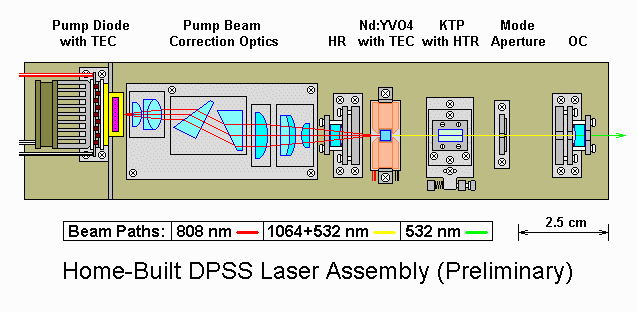- Joined
- Jul 4, 2012
- Messages
- 2,832
- Points
- 63
so i have been looking up some of the more exotic DPSS wavelengths-exotic being really anything that isnt 532nm (although it seems 473nm will be as affordable as 532nm is in the not too distant future). I really, REALLY like the color of 589...who doesnt, honestly.
in my searched, i quickly found out that 808nm is pumped into ND:YVO4 (or some other crystal? first question which lases 2 lines- 1,064 and 1,319 nm for 589, and 1,064 nm and 1,342 nm for 593.5. these 2 lines are then combined (second question) and passed through the KTP, frequency doubling (third question) to produce 589 and 593.5nm respectively.
so to my questions.
1) im fairly sure its ND:YVO4, as it seems to me to be one of the most commonly used pump crystals in solid state lasers, and this is what my gooooogling has showed to be true of the two yellows. but, how does this crystal produce two lines? is it a different coating, different angle, what?
2) the two lines are then combined-a few sources say "paralleled". this leads into question 3, because no matter which way i look at it, i dont get 589 from 1064 and 1319.
3) if the two lines are combined-say 1,064 and 1,319 (for 589), then doubled, how the heck does that come out to 589? cant think of any math that makes that check out. if those two beams are added, then tripled, that gets close, but last time i checked, close to 589 wasnt 589 (comes out to be 595.75).
so either a) the sources i have looked at are wrong, b) i dont know what im on about c) i cant brain today or d) all of the above
anyway, sorry for rambling on, and :thanks: for reading!
in my searched, i quickly found out that 808nm is pumped into ND:YVO4 (or some other crystal? first question which lases 2 lines- 1,064 and 1,319 nm for 589, and 1,064 nm and 1,342 nm for 593.5. these 2 lines are then combined (second question) and passed through the KTP, frequency doubling (third question) to produce 589 and 593.5nm respectively.
so to my questions.
1) im fairly sure its ND:YVO4, as it seems to me to be one of the most commonly used pump crystals in solid state lasers, and this is what my gooooogling has showed to be true of the two yellows. but, how does this crystal produce two lines? is it a different coating, different angle, what?
2) the two lines are then combined-a few sources say "paralleled". this leads into question 3, because no matter which way i look at it, i dont get 589 from 1064 and 1319.
3) if the two lines are combined-say 1,064 and 1,319 (for 589), then doubled, how the heck does that come out to 589? cant think of any math that makes that check out. if those two beams are added, then tripled, that gets close, but last time i checked, close to 589 wasnt 589 (comes out to be 595.75).
so either a) the sources i have looked at are wrong, b) i dont know what im on about c) i cant brain today or d) all of the above
anyway, sorry for rambling on, and :thanks: for reading!





